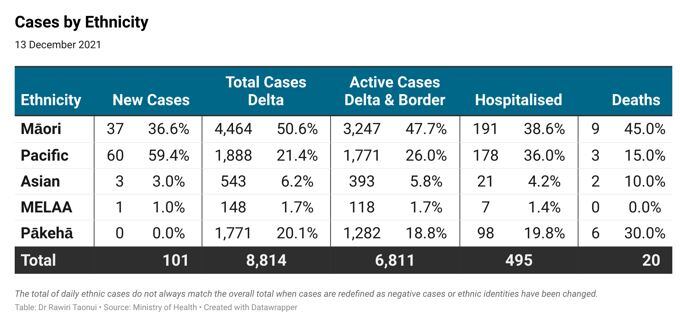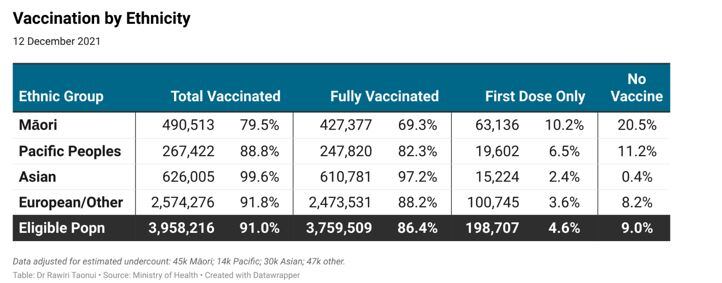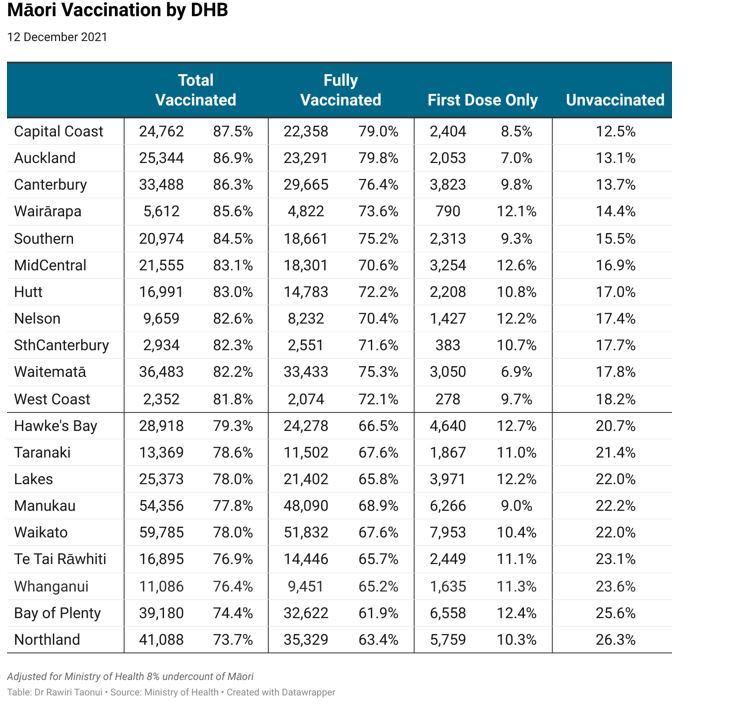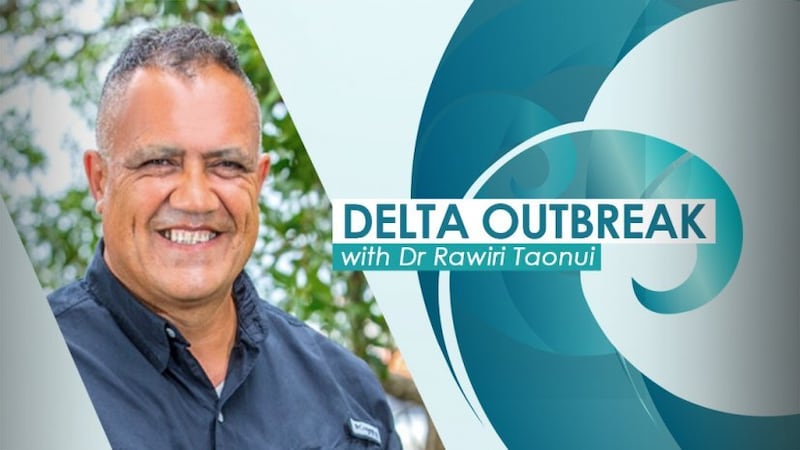Today marks the end of the 17th week of the Delta outbreak.
There were 101 new cases today. For the second day in a row, there were no cases in the Pākehā community.
The total number of weekly new cases have declined 5.4%, 29.0% and 27.2% over the last three weeks.
Māori cases
The Delta variant has been described as the “disease of the unvaccinated”.
With vulnerabilities driven by racism, health inequality, poverty, poor housing and overcrowding, and inadequate pandemic strategies, Delta is also the disease of the impoverished, marginalised and brown.
Alongside the decline in overall and Pākehā cases, Māori and Pacific have set new records.
- Māori have passed the 50% threshold setting a record of 50.6% of total cases in the Delta Outbreak.
- This is three times the Māori demographic of 16.7%.
- Today also marks the 80th consecutive day Māori have been either the highest or second-highest number of cases.

- Māori and Pacific were 96% of all cases today.
- Pacific were the highest cases today, with 60.
- This is the second time in the last 11 days Pacific have been the highest number of daily cases.
- Māori and Pacific separately or jointly have been the highest number of cases for 119 of 121 days in the 17-week long Delta outbreak.

- More than any other figure, this number demonstrates that the Delta Outbreak in Aotearoa afflicts Māori and Pacific communities more than any others.
On the current 7-day trend of new overall cases (93 per day), Māori cases (44 per day), and Pacific cases (35 per day) there will be 10,600 total cases by New Year’s Day, including 5,300 Māori, and 2,550
Both Māori and Pacific numbers will increase after the Auckland border opens on December 15. Both are vulnerable.

Adjusting for an undercount of Māori and Pacific in the Ministry of Health HSU (Health Service User Index) vaccination data, and despite gaps with Pākehā closing, yesterday, Māori were 69.3% double vaccinations 17.1% behind the national average, and Pacific 82.3% double vaccinated 4.1% behind the national average.
With a greater percentage of the population outside of Auckland, Māori will be hit hardest.
Māori have reached over 80% total vaccinations and over 70% full vaccination in 11 District Health Boards (DHBs).
Full Māori vaccination is below 70% in nine DHBs (Northland, Manukau, Waikato, Bay of Plenty, Lakes, Taranaki, Whanganui, Hawkes Bay, Te Tai Rāwhiti) .

Eleven are in the North Island. Each has over 20% unvaccinated Māori. Except for Te Tai Rāwhiti, each has already had cases. The nine are home to five or six of Māori's largest communities, have areas of high deprivation and variable health delivery and are sites of vaccination resistance. These are the areas that will be most vulnerable when the Auckland border opens.
Noho haumaru, stay safe.
Dr Rawiri Taonui

